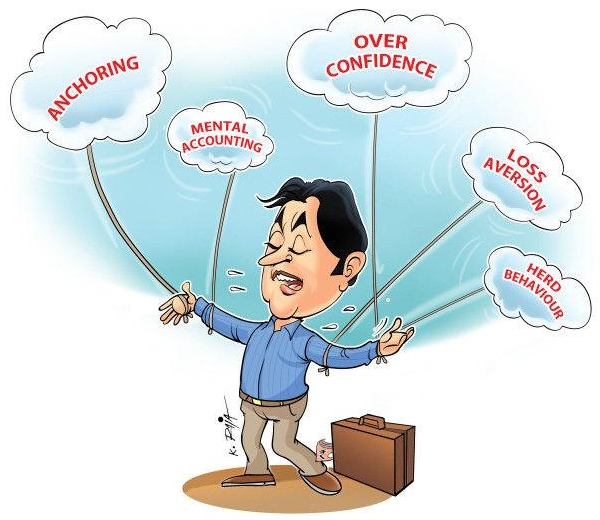How not to select shares? What are behavioral biases in Investment Decision Making?
Behavioral biases in investment decision making refer to the systematic errors in judgment and decision-making that arise from psychological and emotional factors, rather than rational analysis.

Some common behavioral biases in investment include:
- Overconfidence- The belief that one's own judgment is more accurate than it is. This bias is characterized by an individual's overconfidence in their skills or judgement. This gives the impression that you are much more skilled than others when in fact you may be quite the opposite. People often let their guard down and take chances without doing a comprehensive risk assessment.
- Confirmation Bias- The tendency to seek out information that confirms one's existing beliefs and ignore information that contradicts them. Investors make decisions first, then look for evidence to back them up.
- Anchoring- Basing decisions on initial information, even if new information suggests a different course of action.
- Herding- Following the actions of others without independent thought. This bias results from uncertainty and the assumption that others may have more knowledge than oneself, and it causes investors to imitate the investment decisions of others. Such decisions frequently result in bubbles and crashes even though they may initially seem right and even justified by short-term performance.
- Availability Heuristic- Most people analyze any facts, information, or option to choose from using examples or experiences that immediately spring to mind. This indicates that not enough study is done to properly evaluate investment possibilities in the realm of investing. As a result, important information is missed, particularly when it comes to numerous investing dangers.
- Prejudice of Familiarity- This bias causes investors to select investments they are most at ease with. This could include asset classes, stocks, or industry sectors that they are more knowledgeable with, etc.
- Loss Aversion- Investors prefer to do nothing despite information and analysis favoring a particular action that in the mind of the investor may lead to a loss. Holding on to losing stocks, avoiding riskier asset classes like equity when there is a lot of information and discussions going around on market volatility are manifestations of this bias.
- Recency Bias- Recent events can have a significant impact on decision-making. Both pleasant and negative events fall under this umbrella. Investors frequently project the incident into the future and anticipate a repetition. In making decisions, recent experience takes precedence over analysis.
- Emotion-driven Decision Making- Allowing emotions such as fear or greed to drive investment decisions.
These biases can lead to suboptimal investment decisions and potentially cause significant financial losses. It's important for investors to be aware of these biases and work to mitigate their impact on their decision-making process.
